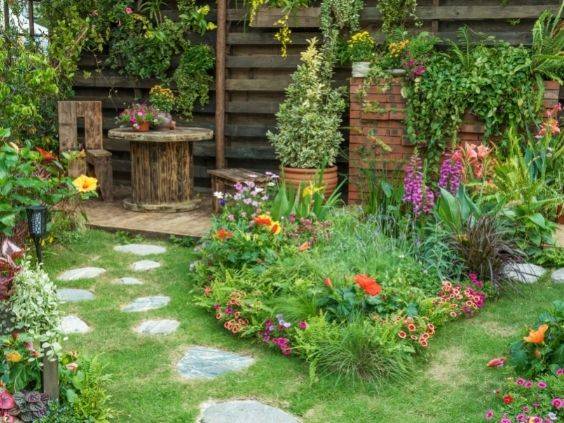It’s the middle of summer, and your hyacinths have fallen over, tulips have dropped their petals, and all that’s left of the daffodils are the leaves. Your home’s curb appeal will suffer if you don’t do something about a tired-looking garden. Try these three ways to freshen a midsummer garden.
Water, Weed, and Mulch
Sprinklers can be inefficient and standing outside for half an hour with a hose can be tedious. Invest in some soaker hoses and weave them around your garden. They can stay there all season and through the rest of the year. Be sure to detach the supply hose and shut the water off for the winter!
Soaker hoses help prevent mildew and disease because they don’t drench leaves and flowers: instead, they sit on the ground and release water slowly so the soil and plant roots can soak it up more efficiently.
If the heat discourages you from getting out there on your knee pads to weed your garden, know that weeds are taking advantage of the fatigue your flowers and shrubs are feeling. What do you do when you must get rid of the weeds but can’t bear to stay outside for very long?
Don’t try to do it all at once. Spend an hour early in the morning, before it gets too hot, and in the evening as the sun sets and the temperatures fall. Set a goal for yourself: I’ll do this bed from the buddleia to the coreopsis, and tomorrow, I’ll get the mess around the rosebush.
When you’ve made it through your entire flowerbed, preserve your hard work with a fresh layer of mulch. This will help the soil retain moisture and discourage new weeds from getting a foothold in your garden.
Deadhead, Prune, and Pull
Deadheading your flowering plants encourages new buds and prolongs the blooming season. Some flowering plants benefit from half a pruning in midsummer to enable them to refresh themselves with new growth.
As a gardener, you know that there will always be plants that don’t make it. If you neglected to water, or the heat has been extreme, you’re going to have some dead plants. Pull them out and fill their spots with colorful, drought-resistant annuals that will last for the rest of the season. Replace the perennials in the fall or early the following spring so they can establish themselves and show healthy bloom next year.
Add Outdoor Décor
Try adding some decorative garden art to freshen your midsummer garden. If you want to attract beautiful local birds to your backyard, get a birdhouse or birdbath to offer a place to nest while also filling in a bare spot in your garden.
Garden flags can mark out the borders of your beds with botanical and floral designs, seasonal messages, or whimsical depictions of fairies or gnomes.
Committed gardeners know that gardening work is never done; it just pauses every once in a while, during the summer for stormy weather and lies dormant during the winter, waiting for a spring refresh.

